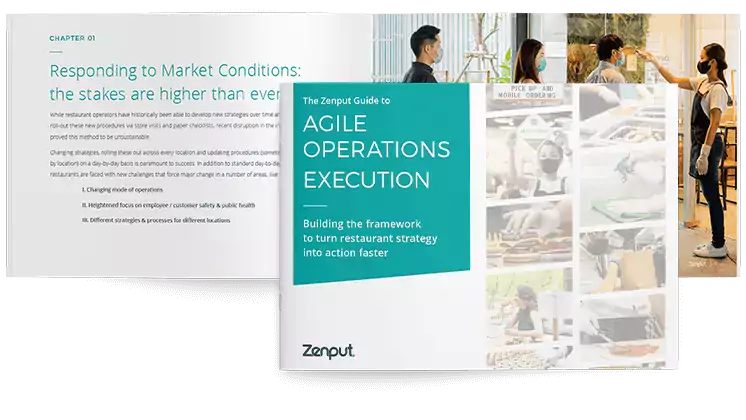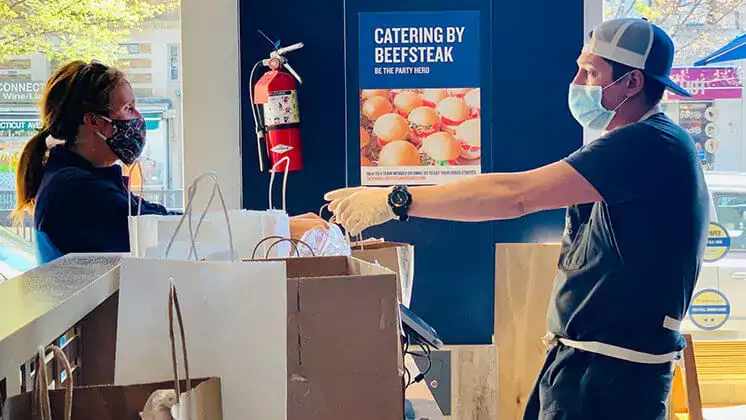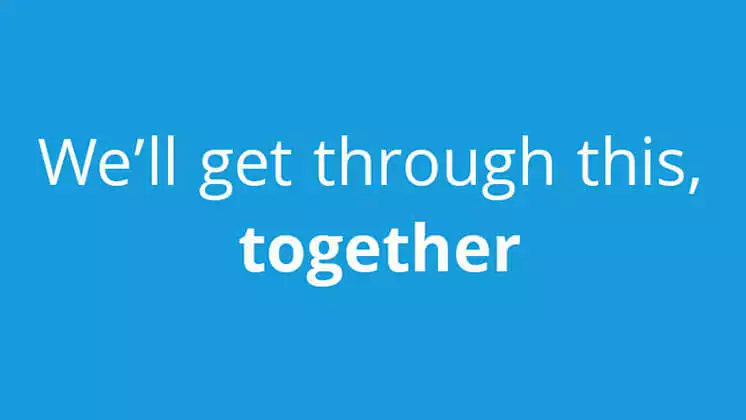The current situation with the coronavirus (COVID-19) has operators planning how to keep their customers and employees healthy and safe from infection. Restaurants, convenience stores, grocery, and other retail chains are preparing their action plans and figuring out how to rapidly roll them out across dozens, hundreds, or thousands of locations.
As a technology company that partners closely with and enables these operators to very quickly orchestrate and deploy plans to every store location, we see operators putting together strategies in response to COVID-19 that include three primary elements:
- How to quickly deploy necessary changes in approach to people management and staffing
- Changes that need to be made to existing cleaning procedures, or new SOPs that need to be introduced
- How to quickly roll-out and ensure compliance with new procedures, especially in an environment where operators may be forced to limit their field teams’ travel.
So that we as a community can quickly learn from one another and respond as effectively as possible, we wanted to share what we’re learning from the operators that we support, as well as how they’re using technology platforms like Zenput to enable their strategy.
Whether you’re still operating your restaurant in a full or limited capacity, are repurposing for takeout and delivery, or want to begin getting ahead of what operations will look like once the worst has passed, here are the top areas to think about:
1. Rapid Employee Screening & Response, and Store Recovery Procedures
Operators need to have simple systems in place to screen employees properly before they start a shift, take the right action and report immediately if an employee shows symptoms, and close the store properly if someone is found to have COVID-19. This will enable operators and their employees to act fast and document everything along the way.
Use questionnaires / checklists with employees to learn how they’re feeling and if they’re showing any symptoms (fever, cough, shortness of breath). Based on the answers provided, your protocols should prompt the manager with steps to take next, such as sending the employee home.
In a case where an employee is found to have COVID-19, the store will likely need to be closed immediately for an extended period of time. Your store managers will need quick guidance on what protocols to follow, such as completing a final store sanitization/cleaning, discarding food on the makeline, placing food into the freezer or refrigerator, emptying and turning off various machinery, etc.
Equip store managers to act fast, enable ops leaders to verify the work being done (or not done) instantly, and document everything along the way.
2. New and More Frequent Sanitation & Cleaning Procedures
Nearly every operator has a set of day-to-day standard operating procedures; most include various types of cleaning, whether it’s the store-closing work for the night, shift-change checklists, or other sanitation tasks. But in this time of extra caution and protection, operators must not only deploy new cleaning procedures, but should also require them to be completed on a more frequent basis.
Which cleaning procedures should you deploy and how often?
The restaurants, convenience stores, and other chain businesses we’re working with are requiring new cleaning procedures to be done multiple times daily. This is in addition to requiring employees to wash hands much more often and/or wear gloves, cleaning tables anytime customers sit down or leave, etc. Here are some of the areas that you’ll want to assign out to your stores to take the guesswork out of what exactly needs to be done, or at least give them a head start.
Customer Facing Areas and Drive-Thru or Take-Out Areas – Sanitizing with approved disinfectants
- Door handles and knobs
- Front counter
- Take-out counter
- Drive-thru counter
- Customer kiosks
- Take-out kiosk
- Drive-thru kiosk
- Customer tables
- Customer chairs and/or booths
- Drive-thru window and handles
- Beverage cooler doors and handles
- Trash cans
- High chairs
- Napkin and condiment dispensers
- Chalkboard/Whiteboards
- Light switches
- Sanitizer dispenser
Restroom Cleaning Areas
- Door handles
- Sink faucets
- Towel dispenser
- Soap and/or sanitizer dispenser
- Toilet handles
- Baby changing station
- Trash can
- Light switches
Kitchen Cleaning Areas
- Door handles
- Cooler handles
- All utensils
- Light switches
- Hood vent controls
- Drop box
- Vending machine buttons
- Cleaning tools
- Mobile devices
- Order screens
- Sink faucets
- Dispatch stations
- Keyboards
- Oven doors
- Soap and/or sanitizer dispenser
- Restock sanitizer
- Restock hand wash soap
- Change aprons
- Change cloths and towels
- Sanitize delivery materials
- Clean pens used by customers
- Clean delivery vehicles
- Clean any customer condiments
As you explore these cleaning/sanitation tasks and consider how else you can build on it to suit your own specific operational needs, the final questions that come up here are “how do you verify that the work has been done?” And “what happens if it’s not done correctly, or at all?”
3. How to Quickly Rollout and Enforce Compliance with Remote Field Management Teams
Most multi-unit operators employ teams of field managers to oversee groups of stores, provide in-person oversight and coaching, and ultimately help enforce standard operating procedures and other initiatives. But with the coronavirus outbreak, many operators are choosing to ground their field managers – asking them to stop visiting their stores to help prevent the spread of infection.
To enable field managers to continue overseeing their stores, it requires equipping store teams with the tools to track and share their work digitally, with automation and reporting available for their field managers to oversee.
Store managers use Zenput to complete the new coronavirus cleaning checklists in the mobile app, answering “Yes/No” questions, submitting photos of specific areas of the store, etc. Field managers and other ops leaders can see completion rates across specific districts or across the entire operation, and open up completed submissions for any store.
If a store manager answers a question in a form with a negative, poor, or incorrect answer, or doesn’t actually complete the form on time, field managers receive alerts instantly. This allows them to view the form that was submitted and, from anywhere, review the work that the store completed, and/or call the store manager instantly to understand why certain work hasn’t been done. Field or district managers can also comment directly on a submission to ask the manager follow up questions or offer quick advice, directly in context of the work that was done.
Finally, field managers have the ability to proactively (and remotely) identify problem areas in their district or in specific stores. Zenput automatically generates compliance reports, removing the needs for managers to manually figure out which questions or tasks have the highest failure rate. Another report ranks the top alerts or corrective actions that have been automatically assigned to stores – another signal about which work is being done incorrectly and that (remote) coaching may be in order.
Keys to Coronavirus Action Planning: Speed, Consistency, and Documentation
The guidance above really comes down to helping restaurant, convenience store, grocery, and other operators roll out new protocols to their stores quickly, enforce consistency across the operation, and document everything along the way to have proof that you’re doing everything you can to keep your customers and employees safe.
Zenput is providing operators with templates for cleaning, employee screening and incidents, and other scenarios. Please contact us today at [email protected] if we can support in any way.
Subscribe to our blog
You are now subscribed!


